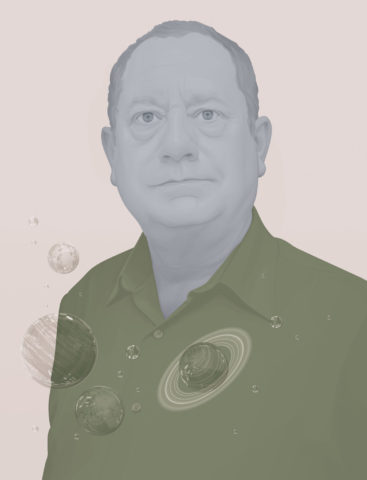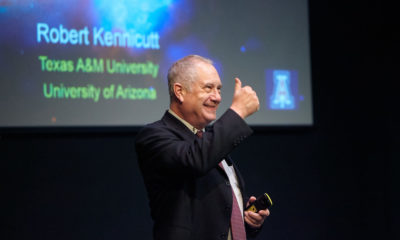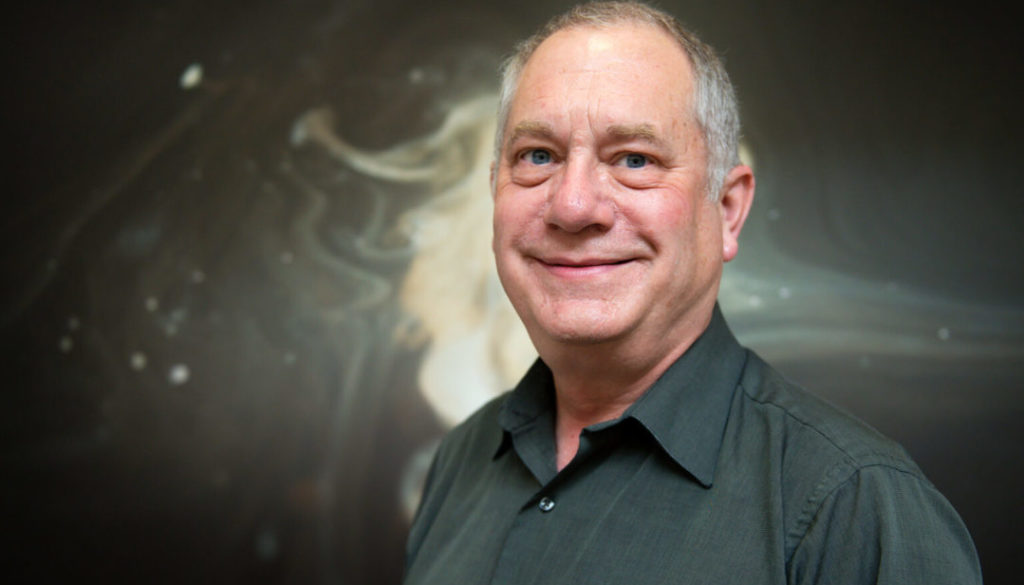A Venue for Visionaries
If the success of the Lead by Example campaign has sent one message, it is this: Texas A&M University is ready to take its next big step forward. With its resources, leadership and famously loyal network of former students, there is little reason for Texas A&M to aim for any standard less than that of the greatest public institution of higher learning in the country.

(Credit: Jules Julien / Texas A&M Foundation.)
Investment magnate and philanthropist Jon Hagler ’58 felt similarly when he described his alma mater as a “sleeping giant” in 2017. His $20 million gift to name the Hagler Institute for Advanced Study that year wasn’t just a monumental landmark for the campaign, but also his way of awaking the giant.
Established by The Texas A&M University System Board of Regents as the Texas A&M Institute for Advanced Study in 2010, the Hagler Institute annually invites a select group of about 10 of the world’s most acclaimed scholars to spend up to a year conducting research in College Station alongside Aggie faculty and students. During their time with the institute, these Hagler Fellows bring invaluable experience and prestige to the university as they come to understand the value of the resources and community that Aggieland has to offer.
Astronomer Robert Kennicutt Jr. is one of 11 Fellows who took on permanent positions at Texas A&M following their initial visits. As leaders in their fields, they are now actively enriching the university’s academic environment from the top down.
Reaching for the Stars
According to Dr. Robert Kennicutt Jr., there’s a reason a telescope is one of the best gifts you can give a child, even if they only use it a few times: A new dollhouse or video game can distract them for hours, but the stars can expand their world beyond their wildest imaginations.
Like many growing up, Kennicutt took up a rabid interest in space. “At first, astronomy was a hobby,” he said. “But when I was 15 years old, I read a book that showed I could make money doing what I loved.”
Kennicutt earned his bachelor’s degree from Rensselaer Polytechnic Institute in Troy, New York, in 1973 before earning his master’s and Ph.D. from the University of Washington. Since then, he has acted as a faculty member at the University of Minnesota, the University of Arizona and the University of Cambridge.

His most famous contribution to his field is the Kennicutt-Schmidt law, which empirically relates how many stars will form in a region of space over time given the region’s local surface gas density. This relation was first speculated upon by the Dutch astronomer Maarten Schmidt. He wrote an early formula in 1959 based on data gathered from the Milky Way but was unable to define the exact value of all variables. His formula was dubbed the Schmidt law.
Using a treasure trove of images and data from deep space that Schmidt lacked access to in his time, Kennicutt readdressed the topic and, in 1989, found the solution Schmidt sought. His contribution earned widespread acclaim from the scientific community, prompting some astronomers to refer to the combined formula as the Kennicutt-Schmidt law. Kennicutt is quick to note that the new name was not his idea. “I still call it the Schmidt law,” he said. “I don’t do these things to become famous; I was simply curious about the answer.”
In addition to researching star and galaxy formation, Kennicutt’s other work includes helping determine the Hubble constant, or the rate at which the universe is expanding, and managing projects related to deep-space infrared telescopic imaging. Throughout his career, he has authored four books and more than 440 articles in peer-reviewed publications. His work has earned him the editor-in-chief position for The Astrophysical Journal, numerous high-profile awards and recognitions, and an offer to join the Hagler Institute as a Fellow in 2016.
That year, Kennicutt left Cambridge to take on an appointment at Texas A&M, a position made permanent in 2018 within the Department of Physics and Astronomy that he holds concurrently with a similar role at the University of Arizona. Kennicutt also serves as executive director of the George P. and Cynthia Woods Mitchell Institute for Fundamental Physics and Astronomy.
“Campus has been welcoming, the physics department is exceptional, and the astronomers here are terrific,” Kennicutt said.
Though he now does more administrative work than ground-level science, he is proud to do his part helping graduate students and professors keep their eyes on the skies.
* ~ * ~ * ~ * ~ *
See the complete original feature as published by the Texas A&M Foundation in Spirit magazine, Winter2021.
# # # # # # # # # #
Where Passion Finds Purpose: The Texas A&M Foundation builds a brighter future for Texas A&M University, one relationship at a time, by uniting generosity and vision to raise and manage major endowed gifts. Learn more at https://www.txamfoundation.com/.
-aTm-
Contact: Shana K. Hutchins, (979) 862-1237 or shutchins@science.tamu.edu or Randy Lunsford, (979) 845-6474 or rlunsford@txamfoundation.com
Written by Bailey Payne ’19
The post A Venue for Visionaries appeared first on Texas A&M College of Science.
